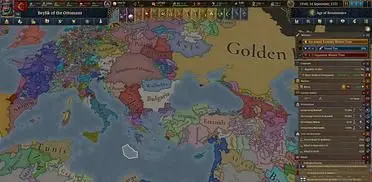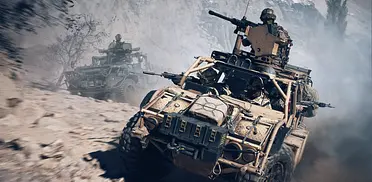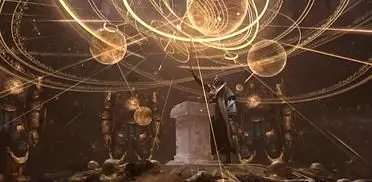My god, it's refreshing to see a large-scale battle game with such a tight focus. No completely unrepresentative introductory cut-scenes, no clumsily extended grand campaigns, no 'buy our DLC' in-game menus, just a lot of men in uncomfortable trousers slinging lethal projectiles at each other across a field. Lovely.
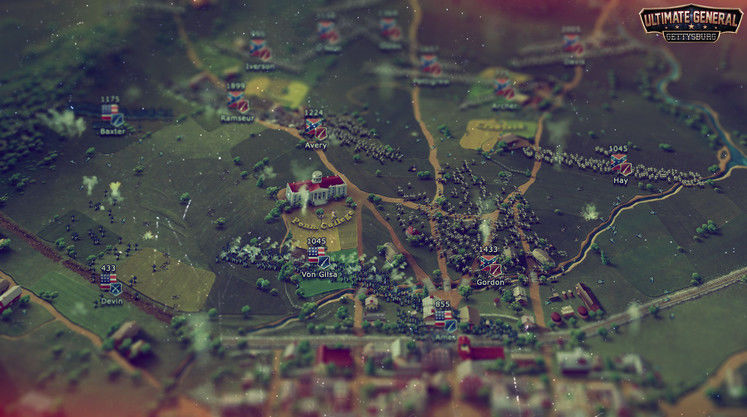 |
| Just look at that tactical map and tell me you don't get a slight twinge in the trouser department |
You play out the battle of Gettysburg, perhaps the key engagement in the American Civil War, taking command of either the Union or the Confederacy (liberal white guilt nudged me towards the former). Commanding your units of skirmishers, infantry and artillery, your task is to fend off the enemy and lay claim to the town of Gettysburg itself. It sounds fairly straightforward, but there's some interesting variation here. Depending on how you perform in each phase of the battle, the resulting missions will unfold differently. Say you lose one flank of the battle, but your main line holds until the end of the day. The mission will end, and you'll get the choice of several subsequent scenarios related to the resulting battlefield; in this case you might choose to fall back to a nearby hill to defend from high ground, stand your ground or even attempt an ill-advised push back into enemy territory.
It's all very organic (for want of a better word) and satisfying, especially combined with the fact that you keep your troop numbers after each skirmish. That's a big plus, actually, the constant nagging reminder in the back of your head that if you send that unit of riflemen in to get smashed, they won't turn up later to bail you out. Each decision you make, each failure and success, feels impactful as part of the greater campaign. While the tighter focus means that the singleplayer mode here is fairly short, it's packed with tense moments and difficult choices. Frankly, it trumps the stilted and awkward grand campaign from Rome 2. It's also much less fiddly to control those huge battles, thanks to an innovative control system.
Rather than repeated clicking and shaping units into place, you simply hold down the mouse and swipe your troops to the location you want, with a handy arrow indicating their route and pointing to where they'll end up. It's incredibly responsive, not to mention satisfying. Another mechanic that Creative Assembly could do with taking on board; when you select an entire army to move forward, they'll automatically assemble into a traditional formation, with a skirmish line out front, infantry behind and artillery tucked safely at the back. Once they get to their appointed destination you can point them towards whichever unit you want them to attack, and they will shape up and form a line themselves, reacting smartly to any attacks on their flank without the need for constant micro-managing.
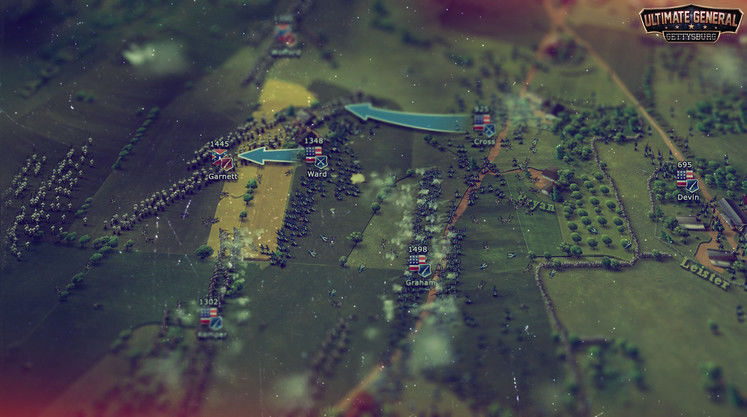 |
| Responding to an ever-changing battlefield is easy, thanks to simple click-and-drag unit movement |
Which is good, because you'll need all that attention focused on fending off an impressively competent set of AI commanders. You choose their personality at the start of a game, risky, aggressive, cautious and so on, and it's here that DarthMod's particular speciality becomes apparent. These are some of the trickiest enemies you'll ever face in a strategy title, full of cunning and creativity, and all too capable of humiliating you if you don't pay attention. Sudden cavalry charges, flanking attacks, smart use of skirmish lines, every trick in the book is used and used well.
One early battle had me fending off multiple attacks from several rover crossings and farms, cycling troops back and forth in a desperate attempt to respond to gaps in my line. All the while enemy artillery rained down fire from elevated positions. Ultimately I had to abandon a forward strategical location in order to pull back to higher ground. The mission ended, and I had a choice; should I stand my ground and wait for reinforcements, or push back across open ground to reclaim that lost position. Hell with that, I thought, let them take this hill from me. They did.
Ultimate General might not be the graphical powerhouse other strategy games claim to be, but you know what? It looks great. Charming, ever-so-slightly cartoonish visuals lathered over an impressively detailed map of Gettysburg and the surrounding terrain. Cannons and rifles kick out plumes of smoke as armies exchange volleys of shot, while the dead litter the ground in increasing numbers as the day goes on. It's simple, but pretty, and it will reliably play on your PC, unless you are currently using a rock with a calculator super-glued to it. That's more than can be said for Rome 2, even a year after release.
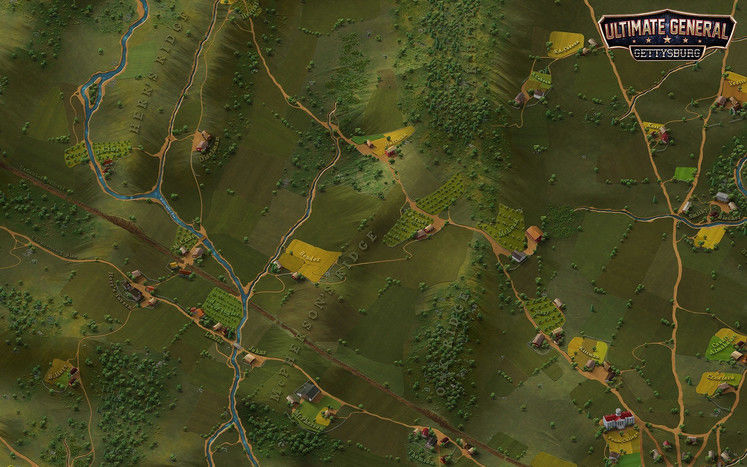 |
| The Gettysburg terrain is a work of art, meticulously crafted from satellite images |
Okay, so it lacks the range of options (there's no multiplayer and apart from some custom 'what if?' scenarios nothing outside the main campaign mode) and polished presentation of more high-profile games, but when you come down do it I'd take Ultimate General's clean, neat statistical displays and simple feedback over any amount of unnecessary garnish; you've got your soldiers' morale, cover situation and current condition right there, and for an armchair general that's all you need.
Rather than impressive graphics, what will keep you coming back is the brief, adaptive and hugely replayable campaign and the ruthless enemy AI. If you're a strategy fan, you should definitely keep Ultimate General on your radar. It's got more creativity, charm and innovation than a hundred similar games with infinitely more bloated budgets. The icing on the cake? It's only $9.99, and it's coming out of its Early Access programme on Steam soon. I'm off to play some more.
Most anticipated feature: DarthMod and the team at Game-Labs are working closely with the community in order to continually improve the game, so the final release version will likely be an even more solid experience.
